Ixora casei
The red variety is the only one found deep in the forests of Pohnpei and Kosrae and is the most common cultivar.
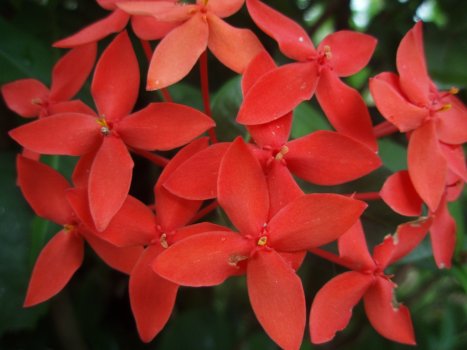
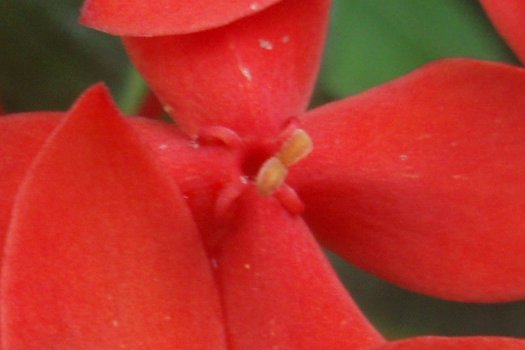
This yellow variety was growing next to the Kosraen church in Kolonia, Pohnpei in 2007, near the plant in the images above. Unlike the color artifact further below, the flower is actually yellow.
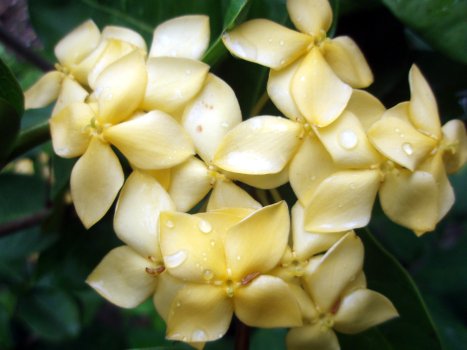
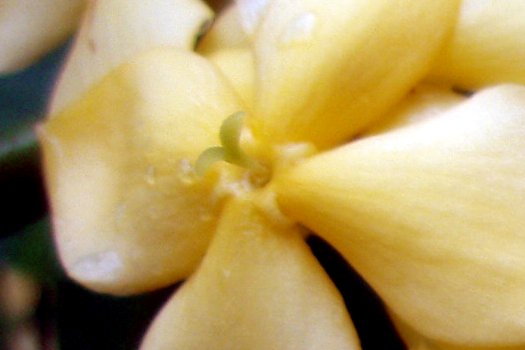
The following salmon and yellow images are of the same
plant, same blossoms, taken at the same time in Awak, U. The
color difference is an artifact of the cameras used. The salmon
shots were taken with a Kodak DC-265 camera, the yellow shots
with an older Sony DSC-F1 camera. Neither color is the exact color of
the plant - the blossoms appear rather orangish to the naked eye. These images were taken by Suprina Ladore at her family home in the valley above Awak, U, in 1999.
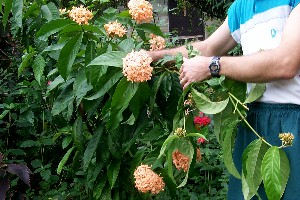
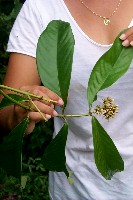
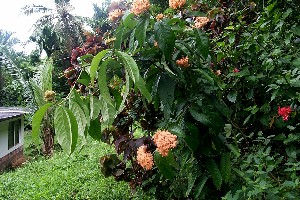
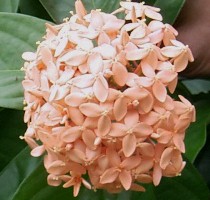
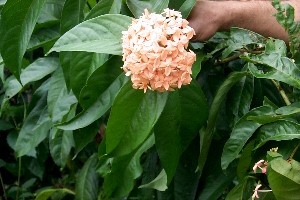
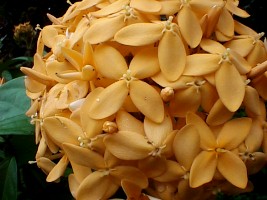
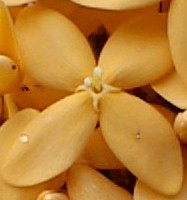
Photo notes: The pink plant is a different plant at Pahnasang Heights in Sokehs.

Location collected: Awak village
Collected by: Suprina Ladore
- Genus species: Ixora casei
- Family: Rubiaceae
- English name: Giant Ixora & Malay Ixora
- Chuukese name: Achiou
- Kosraen name: Kalsruh
- Pohnpeian name: Ketieu
- Pingelapese: Keliseu
- Yapese name: Waish
- Growth form: Shrub
- Growth location: Terrestrial
- Growth environment: from forest to cultivated garden
- Growth zone: Topical
- Average height: 152-165 cm
- Stem: woody
- Leaf arrangement: Simple, opposite
- Stipule: Absent
- Petioles: 2.5 cm, smooth surface
- Leaf blade: Lanceolate shape, accuminate to acute tip, entire margin, pinnate vennation, green color, smooth surface, 24 cm long.
- Inflorescence type: Umbel with a pedicel that is 2.3 cm long
- Floral bracts: None
- Flower: Rotation, actinomorphic symmetry
- Calyx: None
- Corolla: Four petals, rotate and about 2 cm long, orange/yellow color with no hair.
- Stamens: One stamen upwardly curved, with an anther that is curled
- Ovary: Cannot be seen
- Style: ?
- Fruit: None
- Seed: None
- Anything else: No strong odor, and the pollinator is the ant.
- Cultural usage: The sticks are cut into small pieces and are used for a Pohnpeian local dance called dokia.
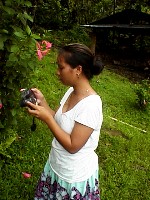
Suprina working with the Kodak digital camera.
Plants of Pohnpei •
Pohnpei ethnobotanical •
Botany •
Lee Ling •
COM-FSM














